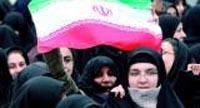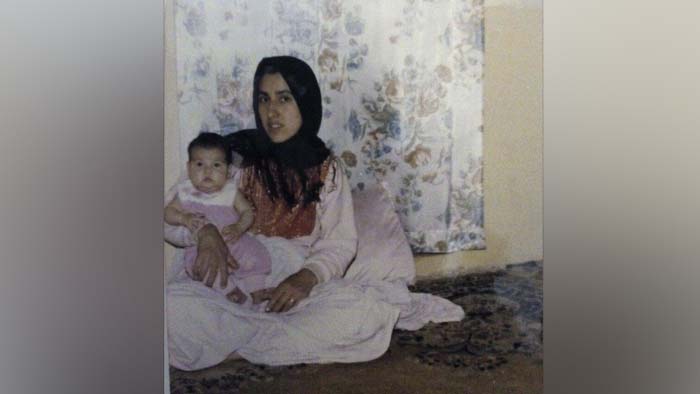The Iranian resistance group “mujahedin khalq” as fifth column against Tehran during the Iran-Iraq war
Since the end of the Saddam era, it plays a very ambiguous role.
Behnam Sanati (name changed by the author) could have had a quiet life in Paris, where his parents after the Islamic revolution in Iran, emigrated in 1979. But in the mid-90s, he made the mistake of his life. He fell in love with a young Iranian girl who convinced him, to join “mujahedin khaq” (the word means “holy warriors”),and then become a militant for Iraqi ex-dictator Saddam Hussein who supported  the group formed to overthrow the regime in Tehran.
the group formed to overthrow the regime in Tehran.
In 1998, the MEK sent him to Ashraf Camp in Iraq, 100 kilometers from the Iranian border. Later he was supposed to launch an attack on a senior military officer in Tehran. “The mission was not successful,” says Sanati cool and emotionless. But the failure of the action
meant that he eventually swallowed a cyanide capsule and then – because the poison had not killed him – he blew up a hand grenade in the air. Here he lost his left hand, but he was received in an Iranian military hospital and survived. He followed five years in prison.
Today he is stunned sitting in a small Parisian bistro and shaking his head. Last week was in fact the struggle time
for the status of mujahedin khalq, a three-year dispute to an end: the group was removed by the EU, like the British model, from the terror list. And last December, Europe tipped the Supreme Court for the EU’s decision on dismissal of the organization’s assets freezing. “This is hopefully not the last word in this matter. Just because the ruling of European Court against the successful listing as a terrorist organization in the European Union has sued, does not alter their crimes in the past,” says Behnam angrily.
Divided opinions
He is right. The contradiction continues, because the EU states are divided in the assessment of the Iranian opposition movement. France wants to appeal the decision of the EU’s Court of appeal. States such as Austria, Ireland, Denmark and Luxembourg, however, argue that the Iranian opposition group after the decision of the EU judges could not stay on the terrorist list.
This list, via a unanimous decision made by all 27 EU member states is renewed every six months. Benham hopes that soon MEK will be on the list again. “mujahedin was founded in 1965 and acted against Shah mohammad Reza Pahlavi who was supported by the west the until the Islamic revolution in 1979. In their worldview, the first supporters demanded an obscure mixture of revolutionary Marxism, guerrilla struggle ethos à la Ho Chi Minh and Shiite Islam, as the protest movement against class exploitation and state violence. The armed struggle from the outset was MEK’s favorite tool to its anti-American and anti-monarchist propaganda with the necessary efficiency to lend, “he explains.
Behnam knows the history of the movement by heart: “MEK planned their first major attack in 1971, when the 2500th anniversary of the Persian monarchy was celebrated. They wanted to blow up E-factory in the capital Tehran what Pahlavi’s security forces prevented. Waves of arrests were the result, Rajavi who now leads the MEK authoritarian was imprisoned. After the Islamic revolution the MEK broke out with the Iranian regime that had originally supported and consequently Rajavi fled to France. MEK led the remaining members in home launch bombings, murders, and attacks on Iranian interests.
Exile in Iraq
The emigrants were not only in the West, where a large number of Iranians live in exile, but also in neighboring Iraq. In 2003 the US-led military coalition toppled dictator Saddam Hussein and made mujahedin disappointed because he had granted them shelter since 1980’s as mercenaries in the first Gulf and war against Iran. Also in the repression of Kurdish and Shiite uprisings, they were involved, what finally shattered the support of the Iranian people of their mother country, “said Behnam. He continued:” This sect has perpetrated attacks on Iranians! How can you shoot to your own compatriots? How could I just join? ”
Behnam takes out a photo from his pocket and shows it to us. “They are from Austria but then they are interested in here,” he says. It shows the ex-Mujaheddin fighters Golzar Farid (name changed by the author). ” In 1984, Farid graduated from the University of Vienna began in 1985 in Austria by the Mujahedin recruited. He flew with Austrian Airlines to Baghdad and came first in a warehouse to Kurdistan. During the Iran-Iraq war, he fought mainly against pro-Iranian Kurdish units. Shortly before the end of the war, the leader of the MEK, Massud Rajavi, moved a tactic to change his group as an army into battle against Iran. As in the UN Resolution 598, July 1987 peace plan that ended the Iran-Iraq war was decided, Rajavi was before his group and stated that their credibility was under question if they would not hit. On July 18th, shortly after Iran signed the ceasefire agreement 7000 MEK fighters began the operation “Eternal Light” for the disastrous failure: at least 1315 fighters were killed.
The organization now shifted its activities to terrorist attacks inside Iran: In 2001, Farid Golzar with antitank missiles and a Kalashnikov sent to Tehran in order to execute an attack. “He was arrested and sentenced to nine years in prison. In 2005, he was released from prison,” says Behnam. “Why there were no death sentences, why he came and Golzar released too early? ’’, We want to know. “Iran’s government began to change in the era of President Mohammad Khatami its policy towards the MEK. With mild penalties and the possibility of reintegration, the 4000 fighters who are still in Camp Ashraf could be, to be convinced to return to Iran,” Behnam said.
Dissatisfied with the news about the MEK is also an employee of the Iranian Center for Strategic Studies: The 35-year-old complains about the unwillingness of the United States, to hand over the camp in Iraq to Iraqi government. “That’s a double morality of the West. How they claim to fight against terror, while they remove a terrorist group from the list,” he asks angrily.
Maryam Rajavi, leader of the National Resistance of Iran (NCRI), provides as legal representative of the exiled opposition group that is completely different. “The decision is a valuable beginning. Now, the U.S. should follow the European example and delete MEK from the list too” she asks. Although they proclaim that their organization for several years has had no longer militant operations, it should be considered as serious that they can not deny that the role of the political orphans of mujahedin in the eventful history of the Middle East.
Joker militant U.S.
After the fall of Saddam there is no use from the cult-like militia, the U.S. is wary of them, because even killings of U.S. soldiers during the Shah’s time go to their account. The hawks in the Pentagon, would still like to be militant Joker against Iran. It was this group that in 2002 uncovered the existence of the uranium enrichment plant at Natanz and the heavy water reactor in Arak, is regarded as evidence of their importance.
On the other hand, the former weapons inspector Scott Ritter says, Israel’s secret service had been the source. For “PR reasons” – Israel itself has nuclear weapons and refuses to acknowledge the NPT to sign – he did the group fed with information. Iraq wants the fighters to get rid of any event and suspected them to cooperate with extremists.
Before Behnam goes, he raises the finger warningly and says: “I will only find my peace when all can live Mujaheddin in the Iranian society, and none of them longer is forced to live in camps where violence and dictatorship prevail.”
Wiener Zeitungat By Arian Faal, born 1977, lives as a journalist and university lecturer in Vienna and Paris.




